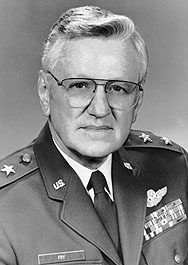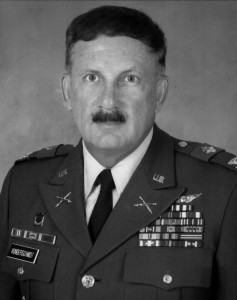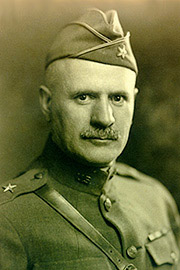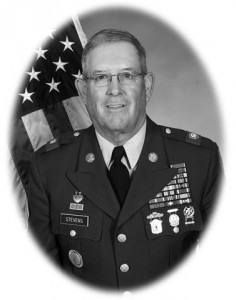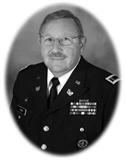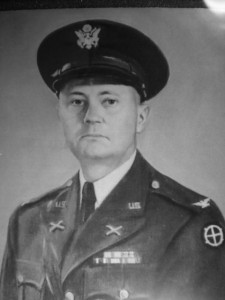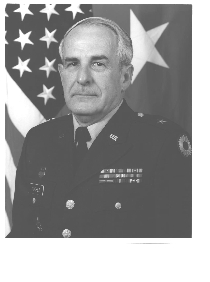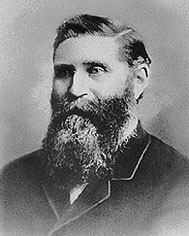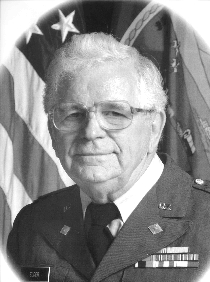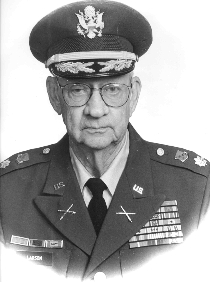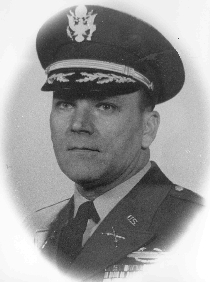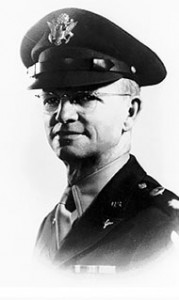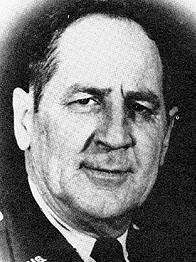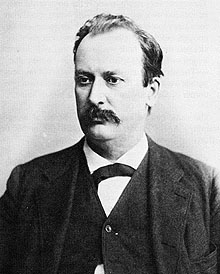The authority for organizing this regiment was received in the month of June, 1863. Recruiting officers were appointed in different parts of the State and enlistments carried on with all possible energy and promptness. Gen. Blunt was appointed by the Secretary of War Recruiting Commissioner, but the work devolved, from necessity, almost wholly upon Col. T. J. Anderson, then Major and Assistant Adjutant General, Army of the Frontier. Fort Scott was the designated rendezvous.
A company. – Was mustered into the United States service August 11th, 1863, and officered as follows: Captain, Samuel Sanders, of Olathe. 1st Lieutenant, Ralph E. Cook, killed in action at Baxter Springs, October 6th, 1863. 2d Lieutenant, Charles Scofield.
B company. – Was mustered into service September 2d, 1863, and officered as follows: Captain, Richard J. Hinton. 1st Lieutenant, John M. Cain. 2d Lieutenant, James M. Trant.
C company. – Was mustered into service August 26th, 1863, and officered as follows: Captain, James A. Soward. 1st Lieutenant, John E. Hayes. 2d Lieutenant, Thomas Adair.
D company. – Was mustered into service August 24th, 1863, and officered as follows: Captain, Frank Kister. 1st Lieutenant, Reuben F. Playford. 2d Lieutenant, Wm. M. Mercer.
E company. – Was mustered into service September 10th, 1863, and officered as follows: Captain, George W. Sands. 1st Lieutenant, Henry De Villiers. 2d Lieutenant, Wm. J. Brewer.
F company. – Was mustered into service September 8th, 1863, and officered as follows: Captain, James Adams. 1st Lieutenant, Samuel Kaiserman. 2d Lieutenant, Isaiah Nichols.
G company. – Was mustered into service October 17th, 1863, and officered as follows: Captain, Ebenezer H. Curtiss. 1st Lieutenant, David E. Westervelt. 2d Lieutenant, George E. Hutchinson.
H company. – Was mustered into service October 17th, 1863, and officered as follows: Captain, Alexander Rush. 1st Lieutenant, Orlando S. Bartlett. 2d Lieutenant, Daniel K. Hardin.
I company. – Was mustered into service October 17th, 1863, and officered as follows: Captain, James L. Rafety. 1st Lieutenant, Marcus F. Gilpatrick. 2d Lieutenant, Harry C. Chase.
K company. – Was mustered into service October 17th, 1863, and officered as follows: Captain, John Branson. 1st Lieutenant, Wm. G. White. 2d Lieutenant, Jesse Buckman.
John R. Montgomery, Adjutant, was mustered into service on the 14th of July, 1863.
Edwin Stokes, Quartermaster, was mustered into service on the 12th of August, 1863.
Francis P. Thomas, Assistant Surgeon, was mustered into service on the 27th of July, 1863.
James H. Gilpatrick, Major, was mustered into service on the 1st of October, 1863.
The regiment left Fort Scott, Kansas, about the 19th of October for Fort Smith, Arkansas, as escort to a large supply train from that place, under command of Maj. J. H. Gilpatrick.
On the 1st of November, at Fort Smith, Arkansas, the organization of the regiment was completed by the muster-in of the following field and staff officers:
Colonel – S. J. Crawford, of the 2d Kansas Cavalry.
Lieut. Colonel – Horatio Knowles, of the 4th Indian Home Guards.
Assistant Surgeon – Jesse D. Wood.
Chaplain – J. B. McAfee, 11th Kansas Cavalry.
Mustered January 27, 1864: Surgeon – George W. Walgamott.
The regiment went into camp on the Poteau River, about two miles south of Fort Smith. Here the work of drill and discipline was the daily routine of duty until the regiment attained a degree of proficiency second to none in the Army of the Frontier. After this, it was constantly engaged in escort, fatigue and garrison duty.
On the 24th of March, 1864, the regiment left Fort Smith and started on what is known as the Camden Expedition. The 2d Kansas Colored formed a part of Col. Williams’ Brigade of Gen. Thayer’s Division. Maj. Gen. Steele’s forces left Little Rock about the same time that Gen. Thayer’s Division left Fort Smith, the latter uniting with the former on the Little Missouri River, and all destined for active operations in the direction of the Red River.
On the 10th of April, the enemy showed themselves in force on Prairie de Anne, and caused the forming of the whole army in line of battle, making the most imposing military display witnessed west of the Mississippi River during the war. The enemy soon disappeared, with but slight engagement for that day. At about 11 o’clock at night the enemy made a sudden dash upon the skirmish line, but were soon driven back, having done but little damage.
Nothing of importance now transpired until the morning of the 13th, when the entire command moved forward and crossed the prairie, driving the enemy before it. They withdrew in haste from their fortifications at the junction of the Prairie de Anne with the Camden and Washington roads.
On the 15th, our forces skirmished most of the day with the enemy, when they attacked the rear of our army under Brig. Gen. Thayer, and were being repulsed at every point, when orders were received from the commanding General to abandon the engagement and proceed towards Camden, which place was reached on the 16th.
On the 18th of April the 1st Kansas Colored lost nearly on-half its numbers in an engagement at Poison Springs with ten times their own numbers. No prisoners were taken from the colored troops, but all instantly killed, which was remembered by the 2d Colored in the engagement of the 30th at Jenkins’ Ferry, Ark.
During the stay at Camden the regiment was constantly engaged on forage or picket duty.
On the 26th of April the regiment, with the whole army, abandoned Camden and its fortifications on account of Gen. Banks’ defeat and retreat on Red River.
The presence of Gen. Steele’s army at Camden was no doubt the salvation of Banks’ Division by withdrawing Gen. Kirby Smith’s army from his pursuit, and thereby giving him ample time to dam the falls of Red River and safely get his transports and gunboats back to the place of starting, whilst the whole of the trans-Mississippi rebel army marched against the Federal forces at Camden.
On the 30th of April, when the regiment had just arrived at the pontoon boats at Jenkins Ferry, on the Saline River, the artillery announced that the rebels had engaged the rear of Gen. Steele’s army, commanded by Gen. Rice, a brave, accomplished, and good officer.
Col. S. J. Crawford, of the Second Colored, immediately countermarched his regiment one and one-half miles to the scene of action, and asked Gen. Rice where he should bring his regiment into action. “What regiment do you command?” was the immediate inquiry. To which the prompt reply was, “2d Kansas Colored Infantry.” “They won’t fight,” responded Gen. Rice. To which the Colonel, in language much more emphatic than Christian, replied that they could and would go as far as it was possible for any others to go.
The 2d was then directed to relieve the 15th Indiana. No sooner had the regiment come into line than it engaged the enemy in earnest, deadly conflict, which lasted for about two hours, when it was confronted by a three-gun rebel battery. The Col. At once saw the impossibility of holding the position any length of time unless the rebel battery was silenced or captured. Or command had no artillery at hand with which to silence it, consequently the Colonel determined upon its capture, and sent acting Adjutant Playford to Gen. Rice for permission to charge the battery.
Up to this time in the history of the war no colored troops had been permitted to charge upon a rebel battery, and Gen. Rice evidently was unwilling that the experiment should be tried under such unpromising circumstances; but finally consented that the movement might be attempted when heavy cheering was heard on the left, which would indicate that the rebel right had been turned. Then, and not until then, should such a hazardous experiment be undertaken.
About the time that acting Adjutant Playford communicated to Col. Crawford Gen. Rice’s orders, heavy cheering was heard on the left, but indicating the reverse of what Gen. Rice had expected, as the cheering was coming from the other side, the rebels at the same time driving in and turning our left, bringing the extreme left of the rebel army will nigh to the road leading to Jenkins’ Ferry, and almost surrounding General Rice’s forces at this time.
Colonel Crawford seeing that the only salvation of the command depended upon prompt and successful action, remarked, “I hear cheering now. Fix bayonets. Charge!” And action followed words. The regiment in the face of three times their own numbers, dashed over an open field for about three hundred yards and upon the rebel battery. The contest was severe – the rebels fighting with undaunted courage – but the aim of the 2d, discharging their pieces as they charged for the battery, was so destructive that but two of the horses were left standing, the others being shot down.
Col. Crawford’s horse was shot through the neck and in the hip, and afterwards died. Every other field officer’s horse was killed under him. The rebel battery was taken, and about one hundred and fifty of the batterymen and those supporting it were killed or mortally wounded, and a number taken prisoners. The men of the 2d, as they rushed for the battery, nerved each other for the deadly work before them by exclaiming, “Remember Poison Springs!”
Captain Rush, of H company, was shot through the head and killed instantly. Seventy enlisted men of the regiment also fell to rise no more. They fell with their faces to the enemy in the discharge of their duty.
Company H dragged the battery to the rear by hand. By this sudden, unexpected and successful charge upon the enemy, and the capture of their battery, is due the success attending our arms in this engagement.
Owing to the heavy rains of the previous night, the Saline bottoms were almost a mortar-bed, rendering it almost impossible for the men to drag the guns to the place, on the north side of the river, where our army encamped for the night.
Had it not been for this successful charge, and the gallant conduct of Gen. Rice and his troops, it would have been almost impossible for the rear of our army, with such a force pressing them, to have succeeded in crossing the river.
Col. Crawford ordered the prisoners to be taken to the rear without insult or injury, which conduct on his part is in striking contrast to the treatment bestowed upon our colored troops at Poison Springs. He also told a rebel Lieutenant and other prisoners to inform their commanding General that colored troops had captured them, and that he must from necessity leave some of his wounded men hospitals by the way, and that he should expect the same kind treatment shown to them that he showed to those falling into his hands; but that just such treatment as his wounded men received at their hands, whether kindness or death, should, from this time forward, be meted out to all rebels falling into our hands. That if they wished to treat as prisoners of war our colored soldiers, to be exchanged for theirs, the decision was their own; but if they could afford to murder our colored prisoners to gratify their fiendish dispositions and passions, the responsibility of commensurate retaliation, to bring them to a sense of justice, was also their own. But, notwithstanding the kindness shown to their prisoners, so soon as our command left, a Texas soldier, in the presence of one of their officers, killed, in the hospital, nine of the wounded men belonging to the 2d Kansas Colored Infantry.
One of the captured guns was left on the north bank of the Saline River – some say thrown into it. The other two were brought to Little Rock.
This campaign resulted only in defeat and disgrace, the loss of hundreds of brave and good men, thousands of horses, mules and wagons, and hundreds of thousands of dollars worth of other Government property.
The 2d returned without any transportation whatever, and consequently without any clothing except that being worn, and with the loss of all company books, records, &c. In this campaign the regiment suffered hunger, hardships and privations almost beyond human endurance, having had but one one-half pounds of hard bread per man for seven days. When an opportunity presented, the ears of corn were taken from the starving mules and eaten with a relish which only extreme hunger can give. One hard tack or one ear of corn would command a price ranging from one to five dollars.
Horatio Knowles, Lieut. Colonel of the regiment, and a brave and good officer, resigned at Little Rock on account of declining health, and about the 20th of October, 1864, at his home at Marmaton, in Bourbon county, Kansas, was murdered by a band of bushwhackers.
The regiment remained at Little Rock barely long enough to draw rations, when it was ordered on a forced march to Fort Smith, then threatened by the rebel forces under Gens. Dockery, Fagan, Cooper and others.
The rebels in Fort Smith were anxiously and almost hourly expecting the arrival of their friends to drive out the handful of troops garrisoning the post during the absence of Gen. Thayer’s forces on the expedition to Camden. The rebel sympathizers were daily receiving information of the near approach of their friends, and their joy was so unbounded that they communicated its source to others. But when the time arrived when they expected to realize one of life’s happiest hours to them, to their mortification and grief, the loyal army, returning by way of Little Rock arrived; and instead of their “dear southern army” coming in with colors flying and drums beating, the colored brigade, under James M. Williams, marched through the principal streets, to the joy and delight of the loyal citizens, and to the sorrow and mortification of the disloyal, of which there were not a few.
The colored brigade consisted of the 1st Kansas Colored, commanded by Major Ward; the 2d Kansas Colored, commanded by Col. S. J. Crawford; the 11 U. S. Colored, commanded by Lieut. Colonel Jas. M. Steele, formerly of the 12th Kansas Inf., and the 54th U. S. Colored.
After an absence of fifty-four days on a fruitless expedition, the 2d returned to its old camp on the Poteau River. Capt. Rush, of H company, a brave and good officer, returned not. He had fought his last battle, and offered up us life on the alter of his country. He was killed in the charge upon the rebel battery at Saline River, on the 30th day of April 1864 – shot through the head.
Captain Rush and about seventy enlisted men of the regiment, who had laid down their lives that others might enjoy the blessing of a free government and also transmit it to succeedings generations, sleep in what was then an enemy’s land, to awake no more to scenes of carnage and strife.
The capture of this battery was perhaps the first charge made by colored troops during the rebellion. They did it nobly – not a soldier faltered or deserted his colors, and their conduct on this occasion clearly demonstrated the utility and practicability of mustering into our service a large force of them, and that they were as reliable, under trying circumstances, as any other class of troops. The men who are good enough to fight as soldiers for their country to die for their country – to save their country – were also good enough to enjoy all the blessings and privileges which the Government confers on any other class of her citizens.
On the 25th of May, the regiment was ordered to reinforce Col. Cloud, then about starting on an expedition into the Indian Territory.
About the 1st of June, the regiment was ordered, in part, to garrison duty at the post of Fort Smith. At this time, Major J. H. Gilpatrick was in command, Colonel (afterwards Governor) Crawford being detached on special duty as President of a General Court Martial then in session at Fort Smith, and Lieut. Col. Knowles’ resignation having been accepted to date May 24th, 1864.
The regiment had by this time become considerably reduced in numbers by losses in action and from disease; still, however, reporting for duty above the average number of men. During the summer and succeeding fall it performed it due share of escort and fatigue duty, and engaging in whole or by detachments as occasion offered or duty called, in skirmishes with the roving bands of the enemy in the vicinity of Fort Smith.
It at one time formed part of an expedition, under command of Col. S. J. Crawford, which penetrated seventy-five miles into the Indian Territory, south and west as far as the Canadian River. The regiment on this campaign convinced the most skeptical, if such there was, of the bravery, coolness, discipline and powers of endurance of the colored troops.
August 9th, Assistant Surgeon F. P. Thomas was attacked with fever, which resulted in his leaving the regiment. This left the regiment without a medical officer, Assistant Surgeon J. D. Wood being on duty in charge of the colored ward in the General Hospital at Fort Smith, Ark.
The following is copied from the official report of Samuel H. Boone, acting Assistant Surgeon, in charge of the regiment:
“I deem it proper to state that this regiment has had no medical officer on duty with it for three or four months past, and there being no report or register, it is impossible for me to make a report for any of the preceding months, and will necessarily cause many blanks in the present that might otherwise have been filled.”
In the month of December the regiment made a force march to Hudson’s Crossing on the Neosho River, by way of Fort Gibson, on quarter rations, a distance of one hundred and fifty miles, returning as escort to a large supply train. The regiment was under the command of Lieut. Col. J. H. Gilpatrick, who had been promoted from Major on the 9th of November, 1864. Except to perform some important duty, when he would return to the regiment for a few days, Colonel Crawford was never in command of the regiment from the time of his detail as President of the General Court Martial, in June.
About the middle of October, Colonel Crawford received information of his nomination for the office of Governor, and came from Fort Smith to Kansas, arriving about the 20th inst., just in time to be an active participant in the expulsion of Gen. Price and his army from our border.
The numerical force of the regiment having been reduced below the minimum, so that he could not be mustered as Colonel, Lieut. Colonel Gilpatrick remained in command until its final muster-out.
Soon after the regiment returned from this expedition it, together with all the other colored troops at the post of Fort Smith, was ordered to Little Rock. A large train of refugees was escorted from Smith. The prejudices and hatred of these refugees toward colored troops was at first manifested, but before reaching their destination they respected them as soldiers who knew and performed their duty well. The regiment left Fort Smith on the 15th of January and arrived at Little Rock on the 4th of February.
On the 17th of June Assistant Surgeon S. H. Boone received a gunshot wound in the head, which left the regiment without any medical officer until February 5th.
Of this march Lieut. Col. Gilpatrick says:
“The men suffered severely on the march by exposure to wet and cold and the want of proper and sufficient food, clothing and shelter. Many of them were barefooted, almost naked, and without blankets. Supplies could not be obtained at Fort Smith or on the way.”
February 5th, the day after the arrival of the regiment at Little Rock, Assistant Surgeon J. D. Wood, a most faithful and skillful medical officer, again reported to the regiment for duty. On the resignation of Surgeon Walgamott, Assistant Surgeon Wood was justly entitled to, for faithful service, and should have been promoted Surgeon of the regiment. No more efficient officer served the Government during the war than Dr. Jesse D. Wood.
After arriving at Little Rock, a camp was selected on the north side of the river, and within four weeks quarters were constructed for the regiment by soldiers detached for that purpose, who, with the greatest celerity and a considerable degree of mechanical ingenuity, performed the necessary labor, from the fitting of the boards in the cypress swamps to the fashioning of the chimneys and cooking ranges with bricks taken from the deserted mansions of the surrounding farms.
This work having been performed, a system of drill was inaugurated occupying six hours in each day, including every part of the instruction of a soldier, from the “school of the soldier” to the movements in brigade and division. And here, when brought in contact with, and criticized by, the troops of the 7th Army Corps, of which it formed a part, the 2d Kansas Colored Infantry (afterward designated the 83 United States) was considered second to no regiment in the Corps in point of discipline and general efficiency.
Here the regiment suffered greatly from sickness, on account of the quarters being located among the cypress swamps, two miles north of Little Rock.
In the spring of 1865 the regiment, under Lieutenant Colonel Gilpatrick, formed part of an expedition which proceeded some distance south from Little Rock and operated against a large band of guerrillas on the Saline River, capturing twenty-five, killing and wounding several, routing completely and driving them from their stronghold.
This is believed to have been the last offensive movement on the part of the United States troops in this Department previous to the surrender of the trans-Mississippi army of the so-called Confederacy.
On the 3d day of July, 1865, Surgeon D. A. Morse’s resignation was accepted.
On the 25th day of July the regiment was ordered to Camden, Arkansas.
The regiment left Little Rock on the 1st of August and arrived on the 10th of the same month.
At Camden the regiment remained on duty until mustered out of service – October 9th, 1865.
After its muster out, the regiment proceeded by way of Pine Bluffs, Arkansas, Memphis, Tennessee, and St. Louis, Missouri, to Leavenworth, Kansas, where it finally discharged from the service of the United States on the 27th day of November, 1865, and received final payment.
The discipline of the 2d Kansas Colored Infantry was excellent, and at all times and under all circumstances the men of the regiment performed their duty well and faithfully – shrank from no danger, avoided no peril.
The most perfect harmony and good feeling prevailed at all times among those composing the regiment. None of the rivalries nor jealousies which unfortunately existed in other organizations, and marred their efficiency and peace, found any place in the 2d.
(SOURCE: Report of the Adjutant General of the State of Kansas, 1861-’65. Topeka, Kansas: 1896 reprint. Transcription provided by CWO2 (Ret.) Alan Russ, Civil War Roundtable of Eastern Kansas.)

 Maj Gen David Weishaar
Maj Gen David Weishaar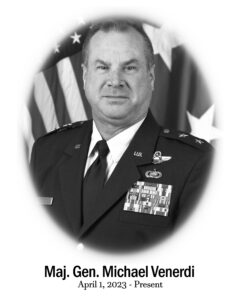


 First Sergeant Darrel W. Haeffele was born on September 25, 1940, in Falls City, Nebraska. He graduated from Atchison High School in 1958. He attended Concordia College in Seward, NE for two years before starting a career in retail.
First Sergeant Darrel W. Haeffele was born on September 25, 1940, in Falls City, Nebraska. He graduated from Atchison High School in 1958. He attended Concordia College in Seward, NE for two years before starting a career in retail. CW5 Roland E. “Ron” Kassebaum was born on February 21, 1946 in Deshler, Nebraska. He graduated from Hebron High School, Hebron, Nebraska in 1964. He attended Fairbury Junior College, Fairbury, Nebraska and the University of Nebraska, Lincoln, Nebraska, and received a Bachelor of Science Degree from the University of the State of New York in 1991. He later attended Liberty University, Lynchberg, Virginia, for courses in accounting and Allen County Community College, Iola, Kansas, for a course in Business Law.
CW5 Roland E. “Ron” Kassebaum was born on February 21, 1946 in Deshler, Nebraska. He graduated from Hebron High School, Hebron, Nebraska in 1964. He attended Fairbury Junior College, Fairbury, Nebraska and the University of Nebraska, Lincoln, Nebraska, and received a Bachelor of Science Degree from the University of the State of New York in 1991. He later attended Liberty University, Lynchberg, Virginia, for courses in accounting and Allen County Community College, Iola, Kansas, for a course in Business Law. Chief Warrant Officer Four Ronald E. Mullinax was born on August 25, 1946, in Norton, Kansas to Earl and Mary Posson. He was adopted by John and Ada Mullinax. He grew up in Lenora, Kansas, graduating from Lenora Rural High School in 1965. After completing a Denver Automotive Institute training program, Ron worked at Look Body Shop in Norton until 1968.
Chief Warrant Officer Four Ronald E. Mullinax was born on August 25, 1946, in Norton, Kansas to Earl and Mary Posson. He was adopted by John and Ada Mullinax. He grew up in Lenora, Kansas, graduating from Lenora Rural High School in 1965. After completing a Denver Automotive Institute training program, Ron worked at Look Body Shop in Norton until 1968. CCMSgt Valerie D. Benton was born on Dec. 10, 1959 in Racine, Wisconsin, where she spent her childhood. She graduated from Washington Park High School in 1978. Soon after graduation she enlisted in the U. S. Air Force and headed to Basic Training at Lackland AFB, Texas in December of 1978. After completion of Basic training, she attended Technical Training at Lowry AFB, Colorado, and graduated as a Food Service Specialist.
CCMSgt Valerie D. Benton was born on Dec. 10, 1959 in Racine, Wisconsin, where she spent her childhood. She graduated from Washington Park High School in 1978. Soon after graduation she enlisted in the U. S. Air Force and headed to Basic Training at Lackland AFB, Texas in December of 1978. After completion of Basic training, she attended Technical Training at Lowry AFB, Colorado, and graduated as a Food Service Specialist.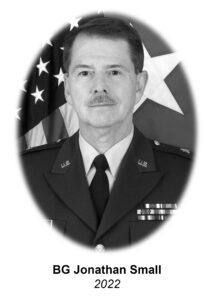 Brigadier General Jonathan P. Small served as The Adjutant General of Kansas from November 1, 2003 to January 4, 2004, culminating a 35-year military career as a distinguished attorney, community leader, citizen-soldier, and military leader. He served as Assistant Adjutant General-Army from 1999 to 2003, and as Commander of the Land Component for the Joint Force Headquarters-Kansas.
Brigadier General Jonathan P. Small served as The Adjutant General of Kansas from November 1, 2003 to January 4, 2004, culminating a 35-year military career as a distinguished attorney, community leader, citizen-soldier, and military leader. He served as Assistant Adjutant General-Army from 1999 to 2003, and as Commander of the Land Component for the Joint Force Headquarters-Kansas. General James H. Lane was a militia leader during the Bleeding Kansas period, the commander of the Kansas “Jayhawker” Brigade during the Civil War, and was one of the first United States Senators from Kansas.
General James H. Lane was a militia leader during the Bleeding Kansas period, the commander of the Kansas “Jayhawker” Brigade during the Civil War, and was one of the first United States Senators from Kansas. Sergeant Major Joseph T. “Jody” Muller was selected for the Kansas National Guard Hall of Fame for his exceptional service as a citizen soldier in the Kansas National Guard for over 41 years.
Sergeant Major Joseph T. “Jody” Muller was selected for the Kansas National Guard Hall of Fame for his exceptional service as a citizen soldier in the Kansas National Guard for over 41 years. Master Sergeant Greg Gilroy was born on July 25, 1947 at Ottawa, Kansas. He was a lifelong resident of Ottawa, graduating from Ottawa High School in 1965. He then attended Emporia State University during the 1965-66 school year.
Master Sergeant Greg Gilroy was born on July 25, 1947 at Ottawa, Kansas. He was a lifelong resident of Ottawa, graduating from Ottawa High School in 1965. He then attended Emporia State University during the 1965-66 school year.








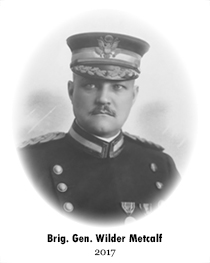

 Brigadier General Deborah Rose entered military service with a direct commission into the United States Air Force Nurse Corps in March 1983, assigned to the 184th Tactical Fighter Group. She transferred to the 190th Clinic in December 1985. In October 1990, she deployed to Jeddah, Saudi Arabia, where she served in an Air Transportable Hospital during Desert Shield. In February 1991, she was activated and deployed to Offutt AFB, Nebraska, assigned to the hospital.
Brigadier General Deborah Rose entered military service with a direct commission into the United States Air Force Nurse Corps in March 1983, assigned to the 184th Tactical Fighter Group. She transferred to the 190th Clinic in December 1985. In October 1990, she deployed to Jeddah, Saudi Arabia, where she served in an Air Transportable Hospital during Desert Shield. In February 1991, she was activated and deployed to Offutt AFB, Nebraska, assigned to the hospital.
 Sergeant Major Lynn E. Holt built his distinguished Kansas Army National Guard career developing strength, retaining Soldiers and insuring Soldiers received proper training. He served from the Detachment through State level. He is known for his ability to recognize Soldier needs at all levels. The same care he felt for Soldiers carried over into his community activities. SGM Holt’s passion for people and their needs exemplifies his true character. He devoted his entire adult life to the betterment of our nation, our state and the Kansas National Guard.
Sergeant Major Lynn E. Holt built his distinguished Kansas Army National Guard career developing strength, retaining Soldiers and insuring Soldiers received proper training. He served from the Detachment through State level. He is known for his ability to recognize Soldier needs at all levels. The same care he felt for Soldiers carried over into his community activities. SGM Holt’s passion for people and their needs exemplifies his true character. He devoted his entire adult life to the betterment of our nation, our state and the Kansas National Guard.



